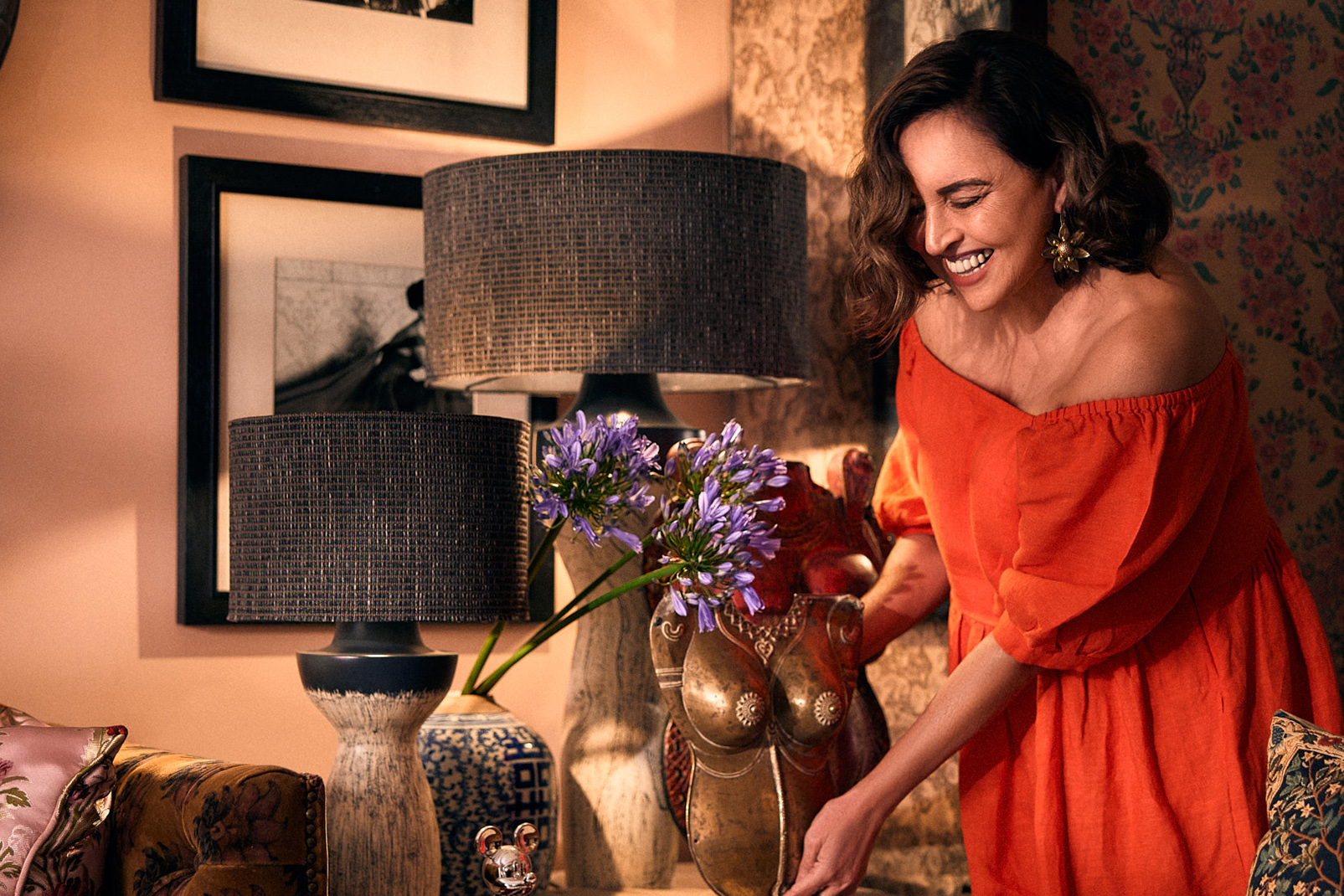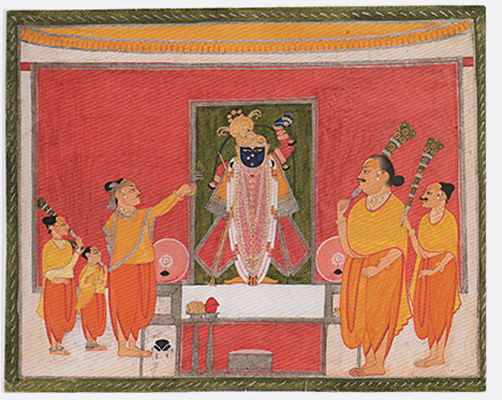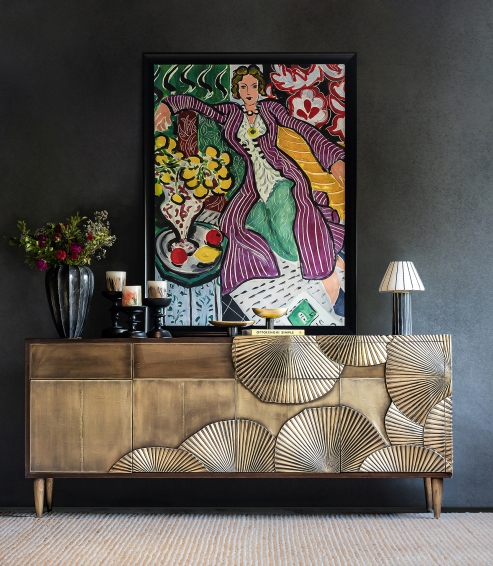We use cookies to make your experience better. To comply with the new e-Privacy directive, we need to ask for your consent to set the cookies. Learn more.
TEXTILE-TRADITIONS-PICHVAIS-OF-NATHDWARA
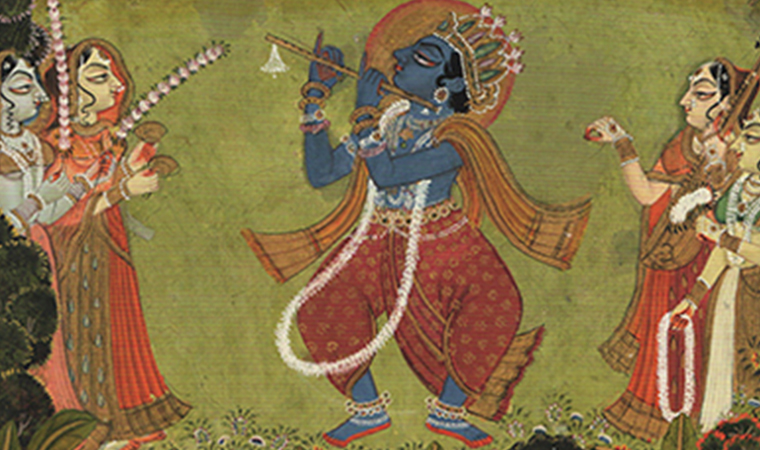
THE VISUAL CULTURES OF NATHDWARA
“Man is made by his belief. As he believes, so he is.”
- Shri Krishna
India, home to one of the most ancient civilisations in the world, continues to be a treasure trove of diverse art forms. Original essays by eminent scholars of Indian art focus on the style of worship, patterns of patronage, and artistic heritage that generated one of these forms – the “Pichvais”, large paintings, hand painted or hand woven on cloth, employed as wall hangings in temples.
Pichvais are exquisitely devotional paintings illustrating scenes from Lord Krishna’s life; these were hung behind the idol to heighten a shrine’s splendour. A pichvais represents an exuberant outpouring of adoration for Krishna that is part theatrical, part devotional: it is designed to create an appropriate emotional atmosphere for the shringaar, the special adornment of the deity that changes from day to day. An art form that was produced by and for the Pushtimarg sect of Hinduism, the tradition of Pichvais was founded by Mahaprabhu Shri Vallabhacharya ji in the 15th century in Nathdwara, Rajasthan.
The central figure was often that of Shrinathji — Lord Krishna as a seven-year-old child — with crescent-shaped eyes, a garland of lotus buds around his neck with the left arm raised up, a reference to when the young Lord lifted up Govardhan Parvat to protect the inhabitants of Vraj from Lord Indra’s wrath. Artists dreamed up detailed compositions, often featuring delicate pink lotuses, white cows with red hand-prints on them, and ‘gopis’, or milkmaids who flocked around Krishna.
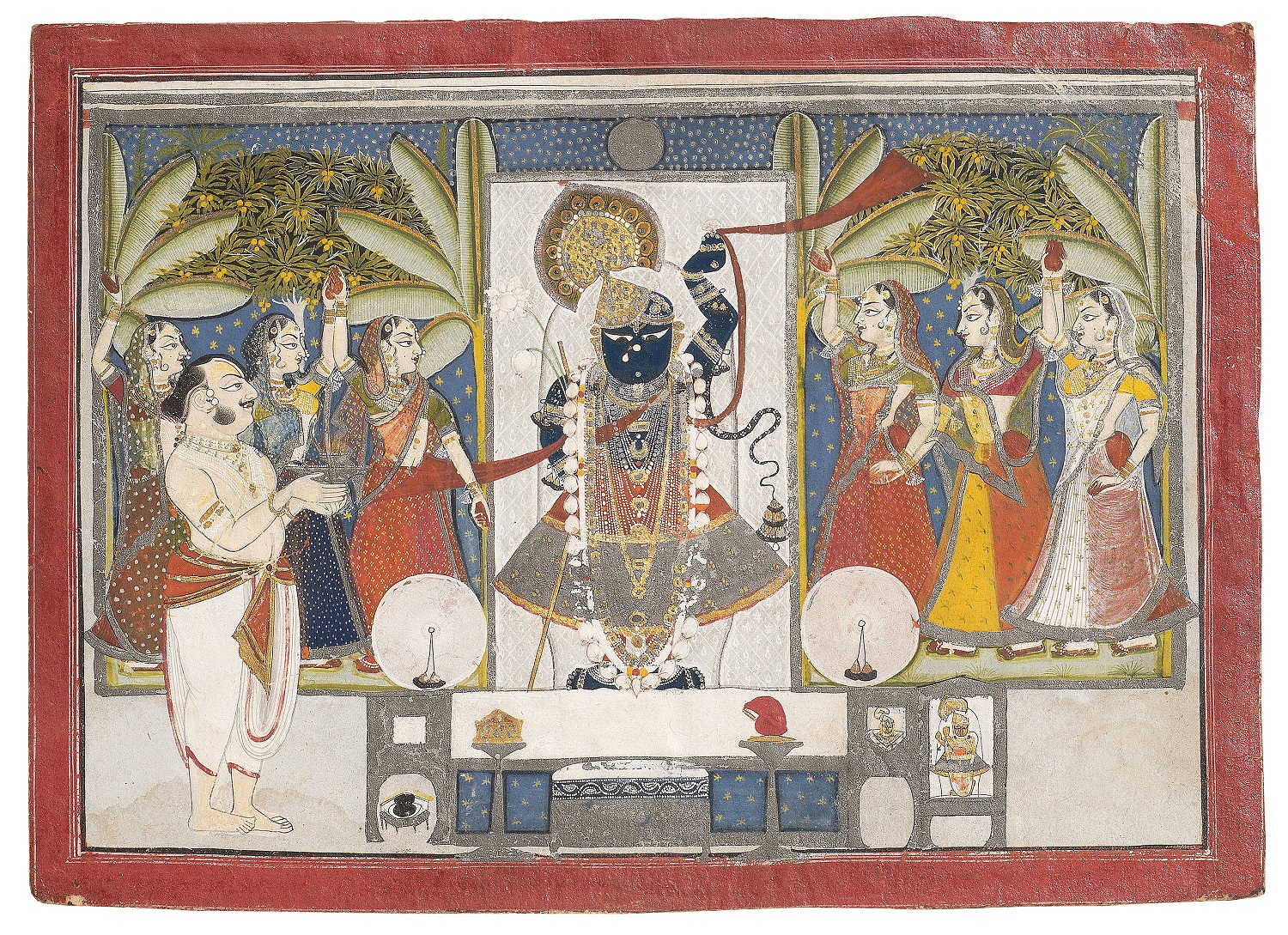

Below, The House of Things presents a roundup of some of the oldest Krishna pichvais that originated between the 10th and the 19th century.
THE BHAGAVATAPURANA
An important 10th century Hindu scripture detailing the ten incarnations of Vishnu, including Krishna, the Dispersed Bhagavatapurana folios came from a profusely decorated manuscript, containing the earliest known illustrated versions of Krishna’s life.
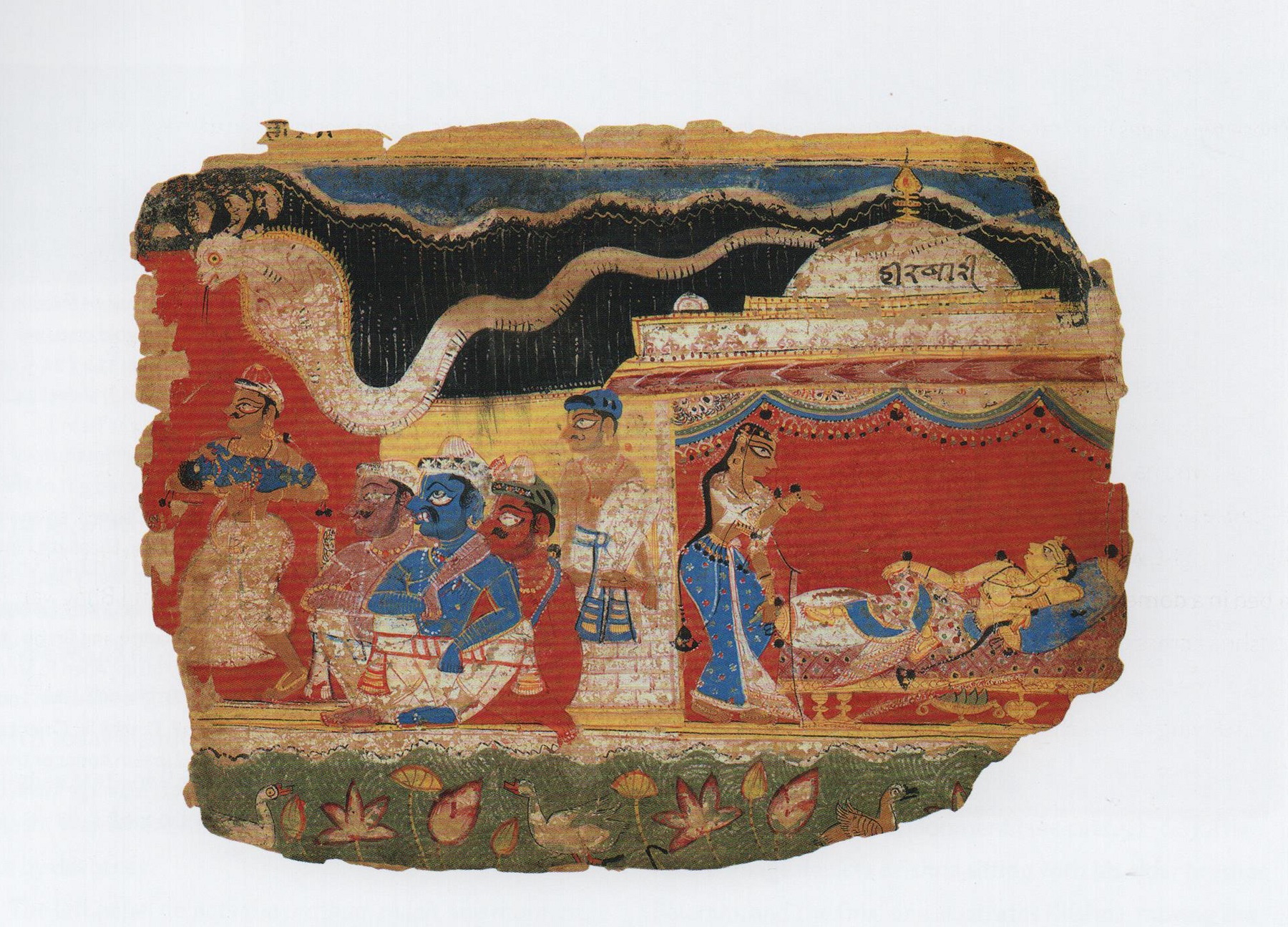

The infant Krishna spirited away by Vasudev. Page from the Dispersed Bhagavatapurana manuscript. Delhi-Agra region, possibly Mathura, India. C. 1520/30. Opaque watercolour on paper. The Art Institute of Chicago, Everett and Ann McNear Collection, 1998.182
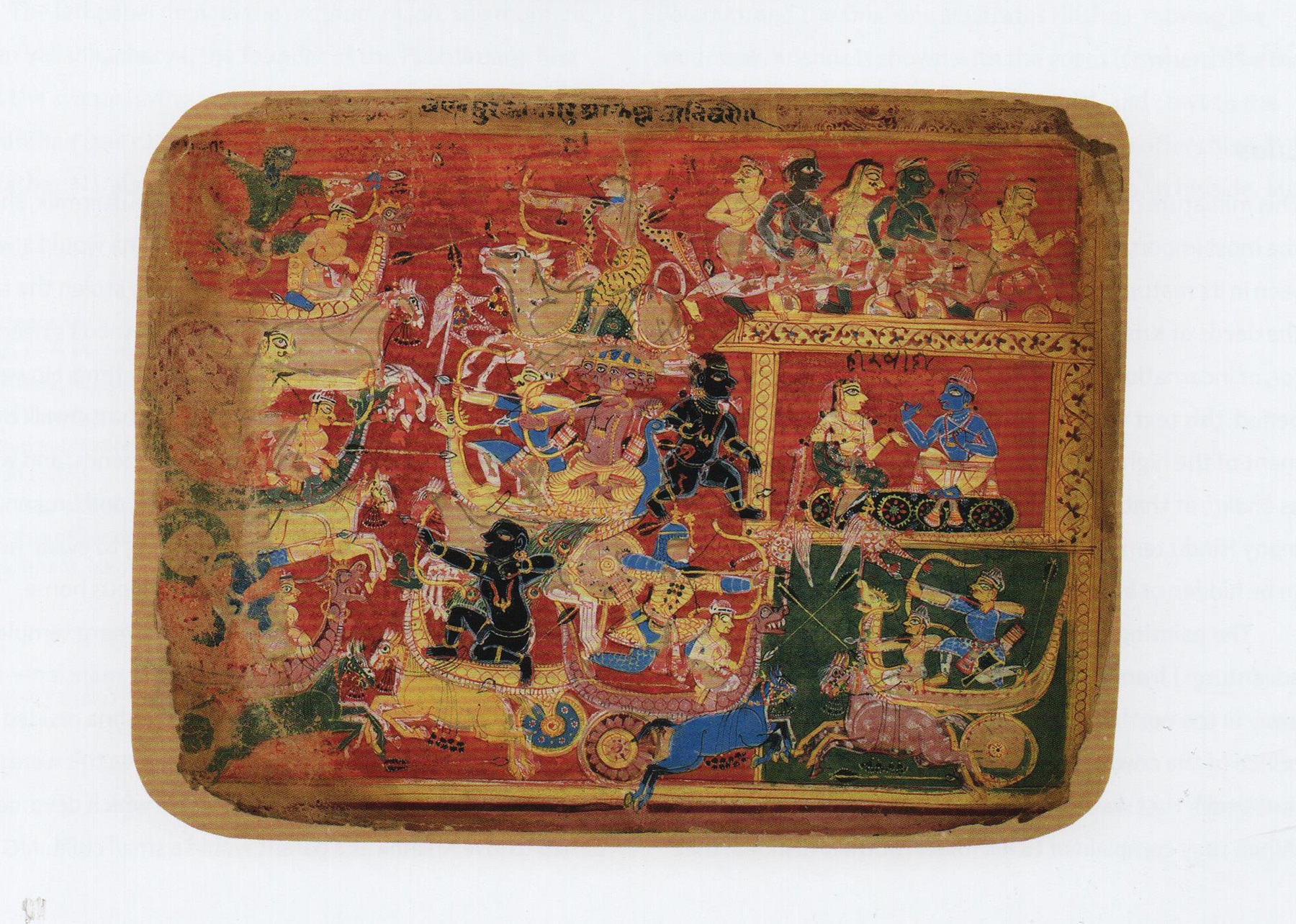

The Battle of the forces of Krishna and Bana. Page from the Dispersed Bhagavatapurana manuscript, Delhi-Agra region, possibly Mathura, India. C. 1520/30. Opaque watercolour on paper. The Art Institute of Chicago, gift of the Jospeh and Helen Regenstein Foundation, 1962.641.
THE ORIGIN
An important consideration for the artists of Nathdwara was the town’s distinctive Pushtimarg culture, which compelled them to invent an imagery that would satisfy the devotees and patrons. When and how, however did this particular practice originate? According to tradition, the sect’s founder, Vallabhacharya (1479-1531) followed a simple ‘seva’ (loving service), perhaps because, as an impassioned missionary, he travelled constantly. His son, Vitthalnathji (1512-1586) surely began the tradition, as he is commonly credited for spreading the sect in Hindu courts and inventing elaborate ‘seva’ for the deities.
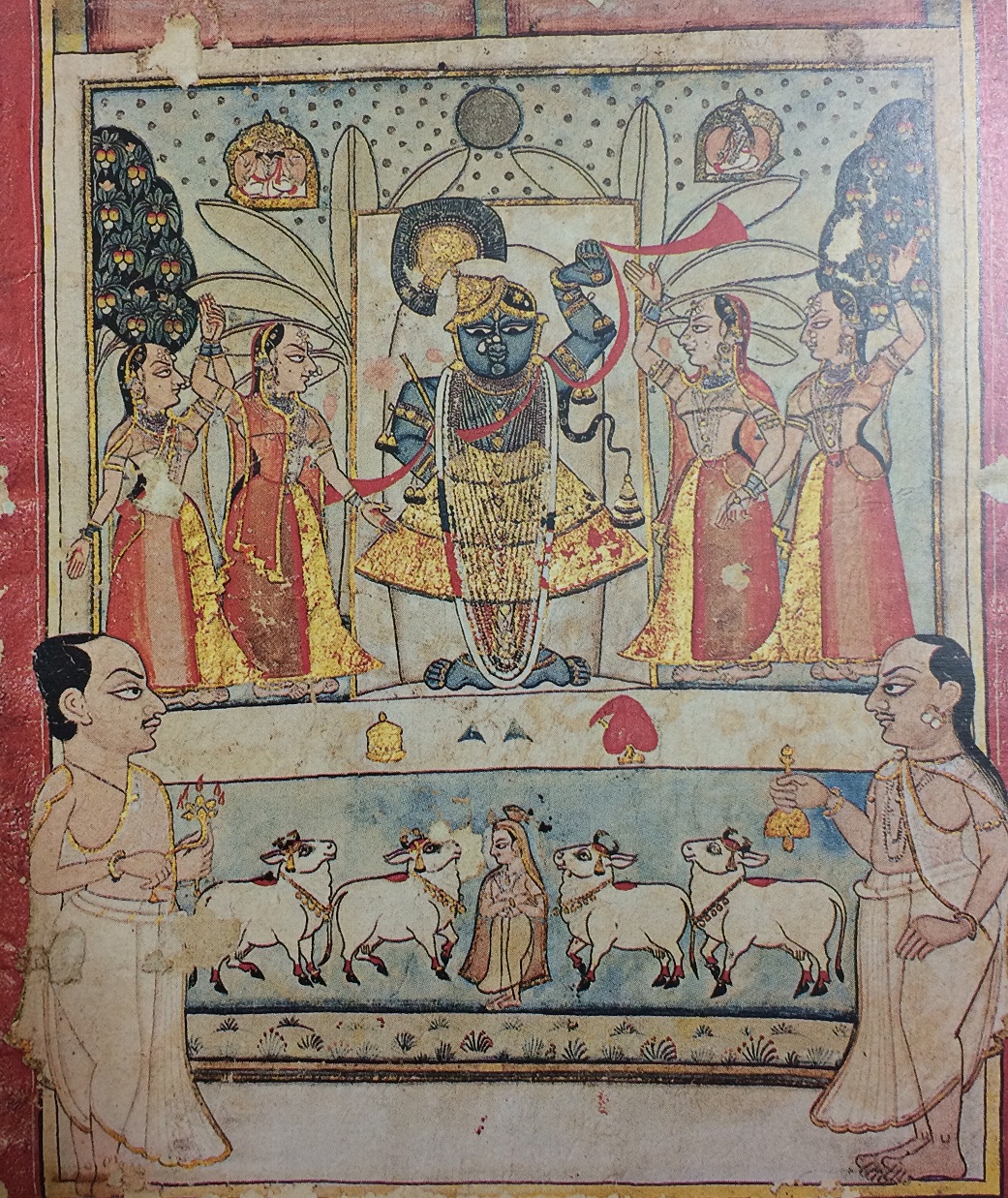

Girdhariji (1769 – 1807). Nathdwara, Rajasthan. Opaque watercolour on paper. Amit Ambalal collection.
Tilkayat Girdhariji (left) is shown on the day of Sharad Purnima, the full moon festival held in the autumn month of ‘ashvin’. Tilkayat Govindji’s son, Girdhariji (1769 – 1807) ruled as tilkayat during a period when pichvais paintings were just beginning to surface as an art form.
BHAKTI
Seeing the full moon, the heralder of the white night lilies, reddened with fresh vermilion powder, its splendour like the face of Lakshmi, the goddess of fortune, and seeing the forest coloured by its silky rays, Krishna played his flue softly, capturing the hearts of the beautiful-eyed women.
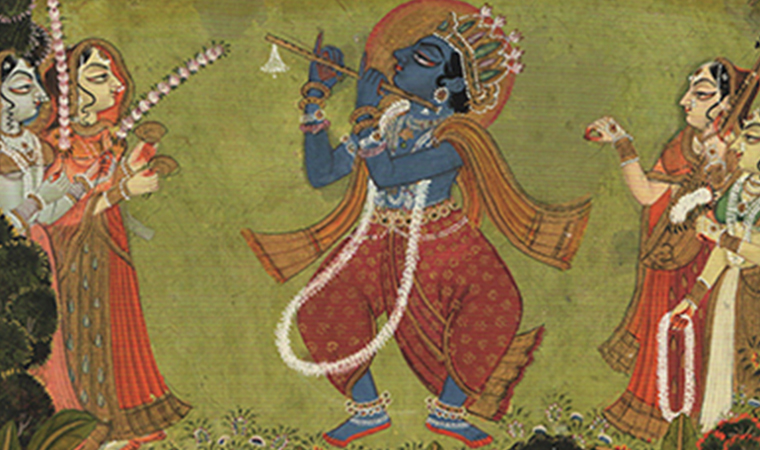

Krishna Fluting for the Gopis. Jodhpur, Rajasthan, India. Late 18th. Opaque watercolour, gold, and tin alloy on paper. The Art Institute of Chicago.
SHRINGAAR
Vitthalnathji, the son of the Pushtimarg founder and an important early leader of the sect, established a tradition of ‘seva’ for Shrinathji that kept in mind the seasons of the Hindu Calendar. The finer details of Shrinathji’s ‘shringaar’, the scenes depicted in the ‘chaubis swaroop’, the miraculous events from Krishna’s life, his constant companions, the beautiful Gopis and the enamoured cows, the lotuses are all what makes pichvais truly remarkable.
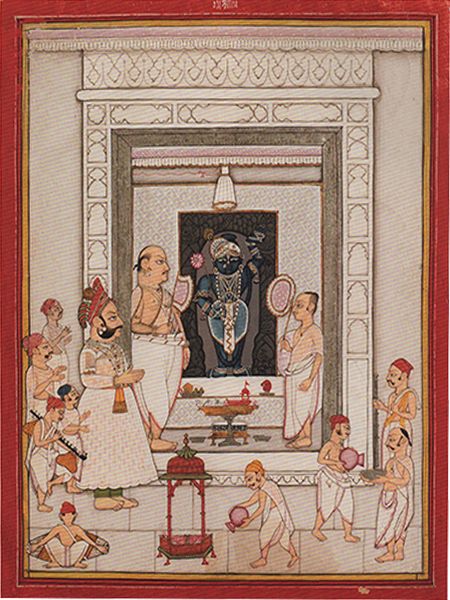

Shringaar on a Summer Day. Nathdwara, Rajasthan, India. Opaque watercolour on paper. Amit Ambalal Collection.
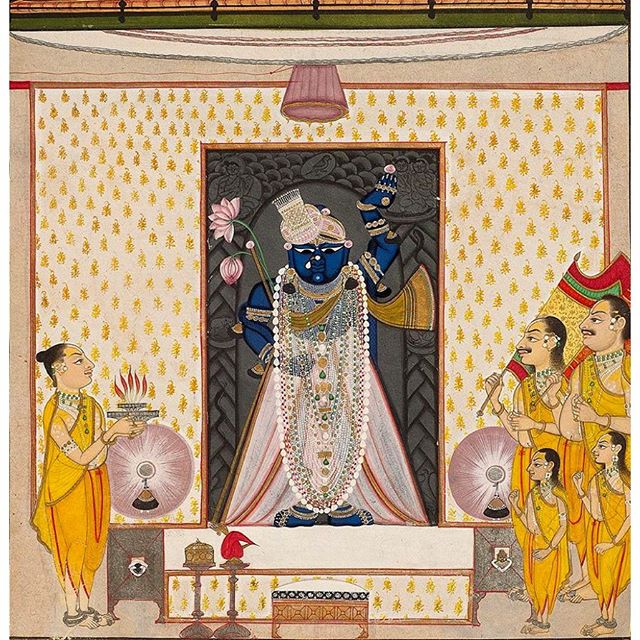

Shringaar of Summer. Nathdwara, Rajasthan, India. Mid 19th century. Opaque watercolour heightened with gold on paper. Amit Ambalal Collection.
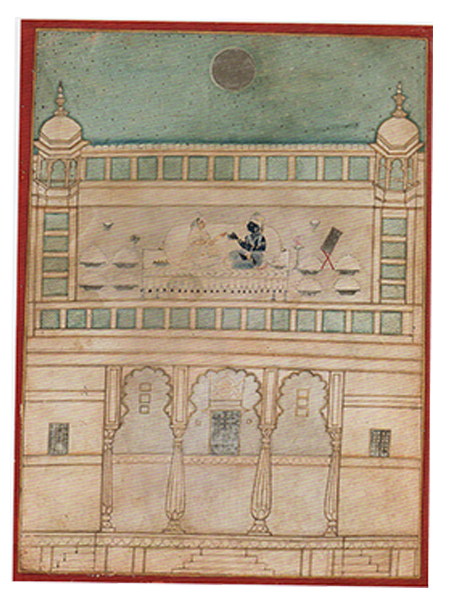

Radha and Krishna on a full moon night. Nathdwara, Rajasthan, India. 19th century. Opaque watercolour on paper. Amit Ambalal Collection.
RAAS LEELA
“Shyam Sunder, Beautiful Dark Lord
dances on the bank of the Yamuna
His dress splendorous
Rendering the seven notes of Raag Kedar
on his flute so mellifluous.
Young maidens surround him
the dance rhythm of his tat-tat-tat-theyi
is unique and unfathomable
The opulence of the scene in the woods,
says Chaturbhujdasa, is unimaginable.
The chariot of the moon
overlooking the scene has stopped moving forward,
unable to continue its journey westward.”
- Chaturbhujdasa
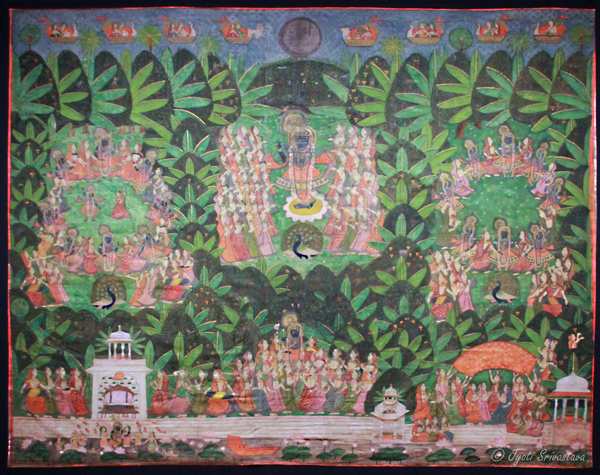

Raas Lila. Nathdwara, Rajasthan, India. Late 19th century. Opaque watercolour on cotton. Arthur M. Sackler Gallery, Smithsonian Institution, 1992.
‘KAMALAN KI PICHVAIS’
Pichvais like these were used during the summer months to create a cool atmosphere in the sanctum of Shreenathji. Works with a repetitive lotus motif help devotees to visualize lotus ponds on the banks of the Yamuna River, where the young Krishna spent much time frolicking with the gopis.
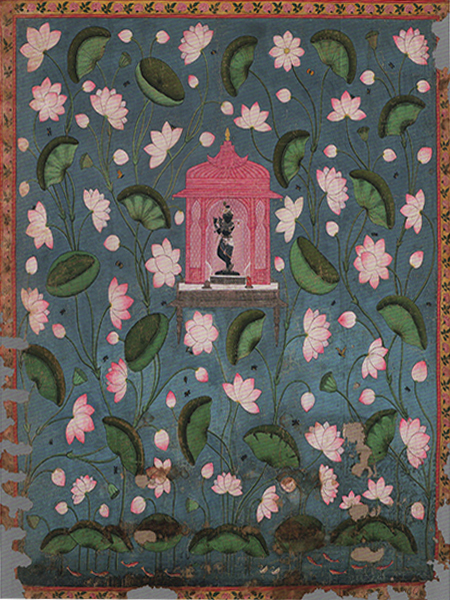

Kamalan ki Pichvais. Nathdwara, Rajasthan, India. Early 20th century. Pigment on cotton. Amit Ambalal Collection.
UTSAV
The most important subject in Krishna Pichvais, ‘utsavs’, or festivals are depicted in vivid, painterly detail, taking place in the ‘Haveli’ (palace) of Shrinathji at Nathdwara. Along with Govardhan Puja and Sharad Purnima, Annakut Mahotsav occupies a central place in the Pushtimarg Calendar.
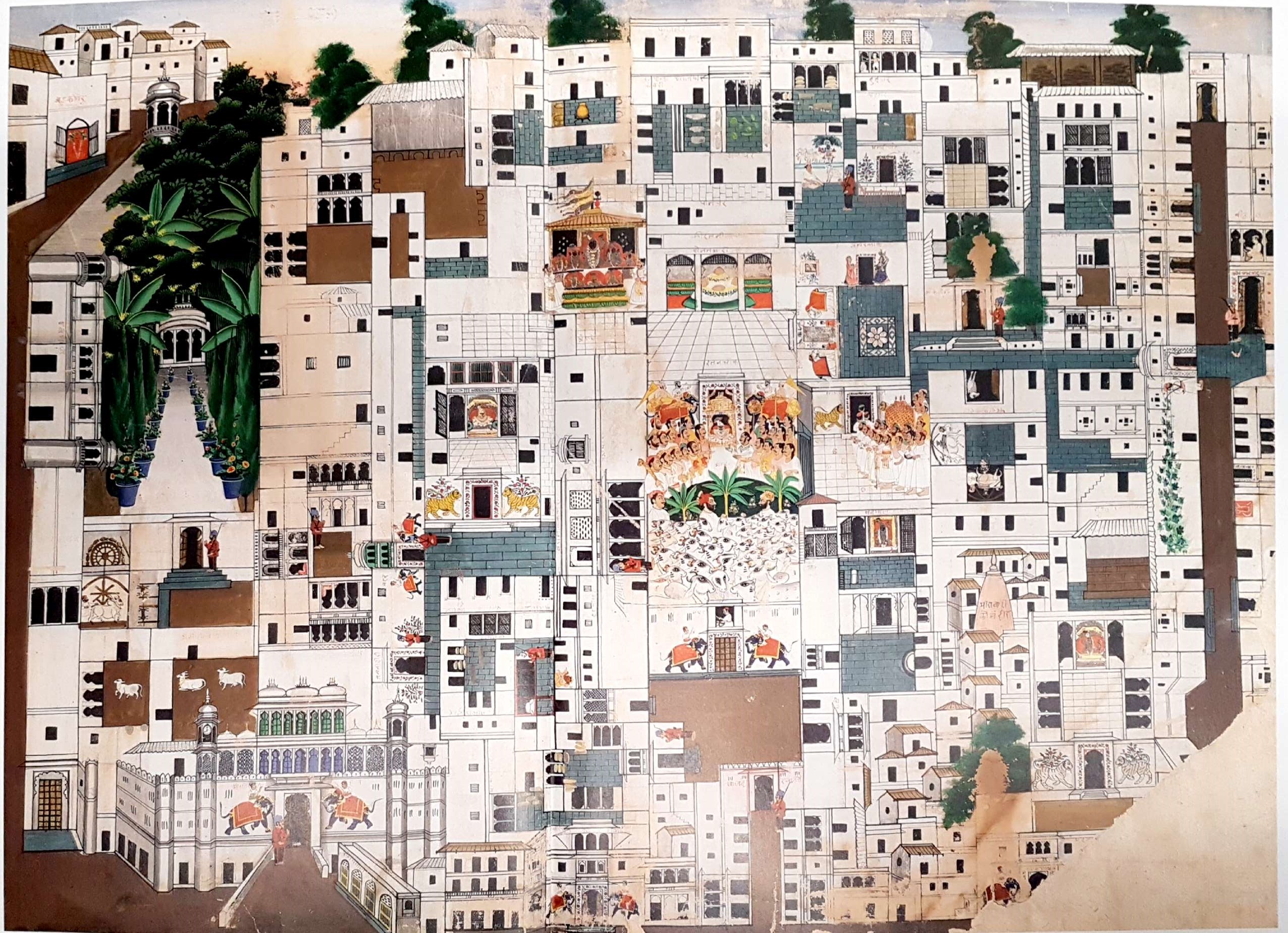

The Haveli of Shrinathji. Nathdwara, Rajasthan, India. Late 19th century. Opaque watercolour on paper. Amit Ambalal collection.
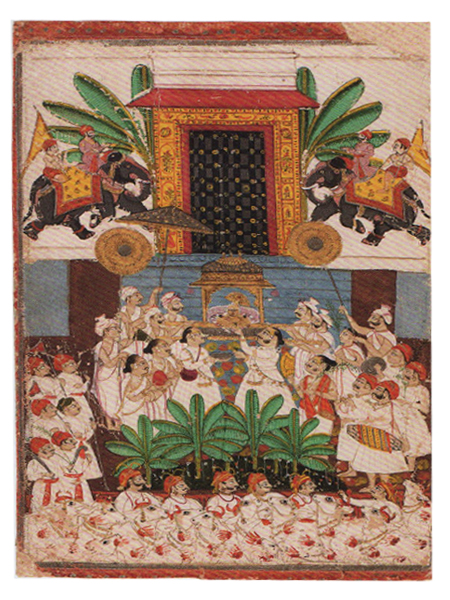

Govardhan Puja. Nathdwara, Rajasthan, India. 19th century. Opaque watercolour with gold on paper. Amit Ambalal Collection.
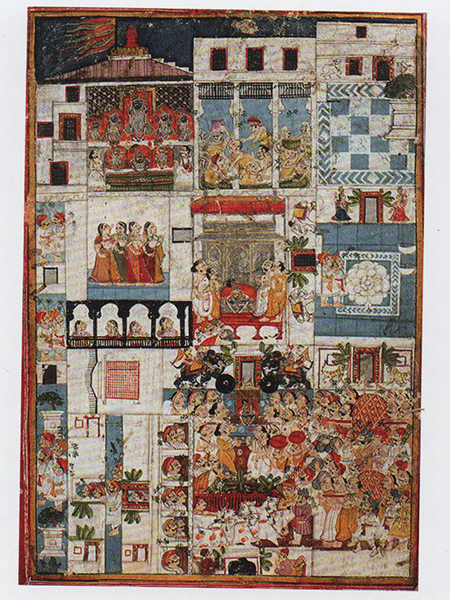

Annakut at Nathdwara. C. 1800. Nathdwara, Rajasthan, India. 19th century. Opaque watercolour on paper. Amit Ambalal Collection.
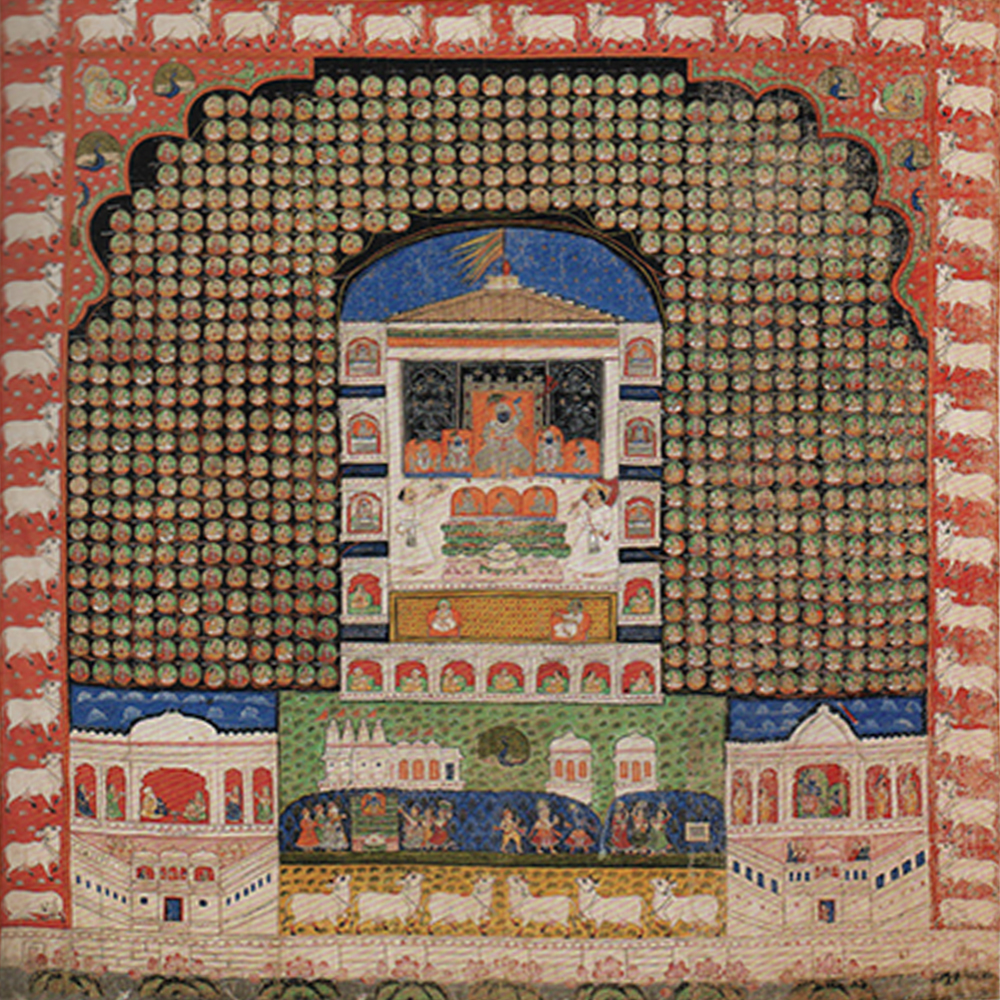

Annakut. Nathdwara, Rajasthan, India. Mid-19th century. Opaque watercolour on cotton. Arthur M. Sackler Gallery, Smithsonian Institution, 1992.
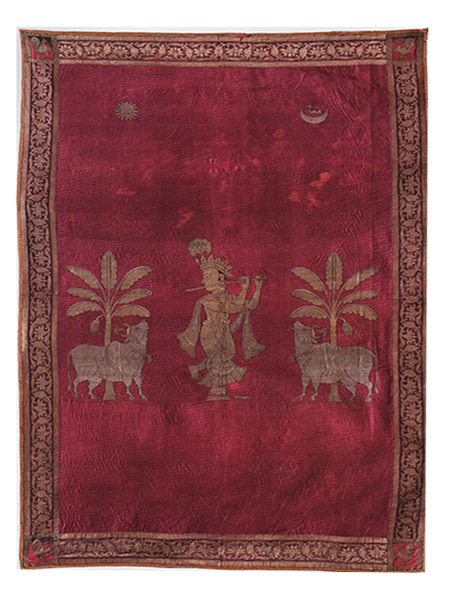

Gopashtami: Pichvai with Krishna Fluting. Gujarat, India. Late 19th century. Silk brocade weave with gold and silver, and coloured silk thread. Amit Ambalal Collection.
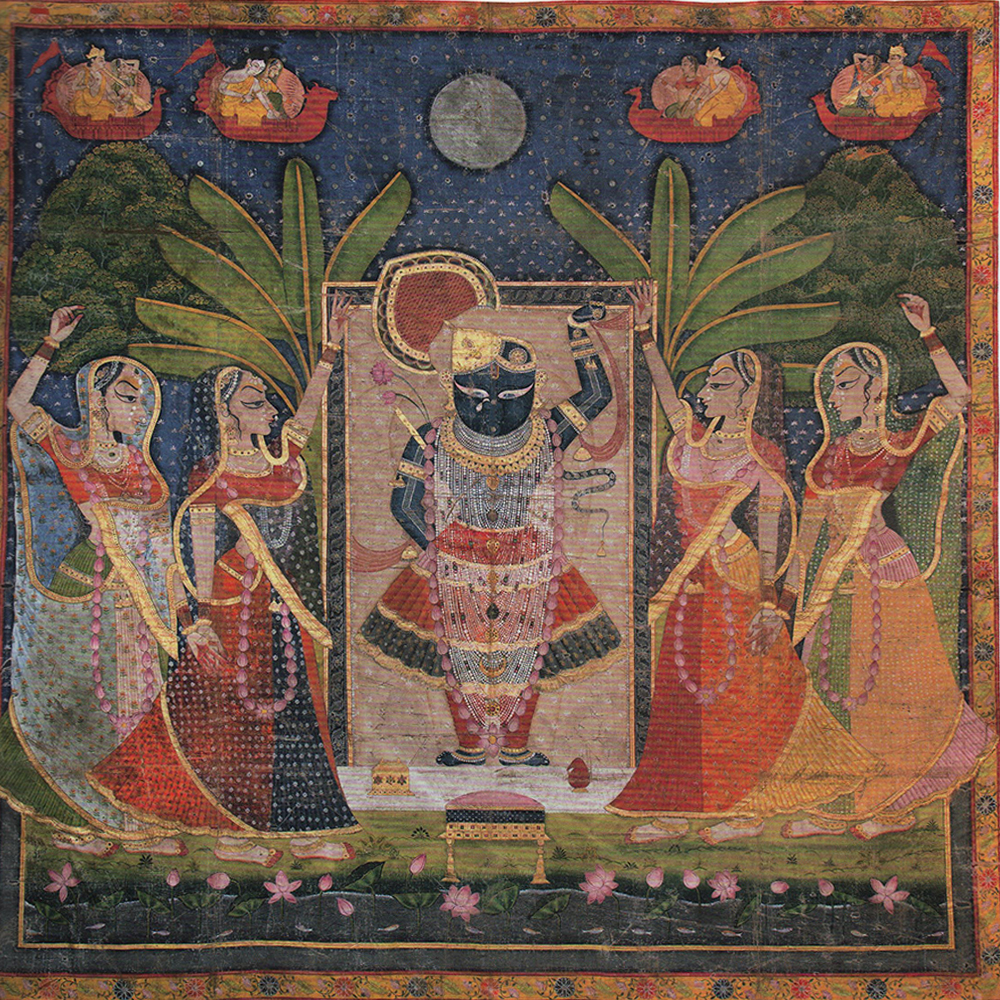

Sharad Purnima. Kishangarh, rajasthan, India. 19th century. Pigment and gold on cotton. TAPI Collection. T.03.79
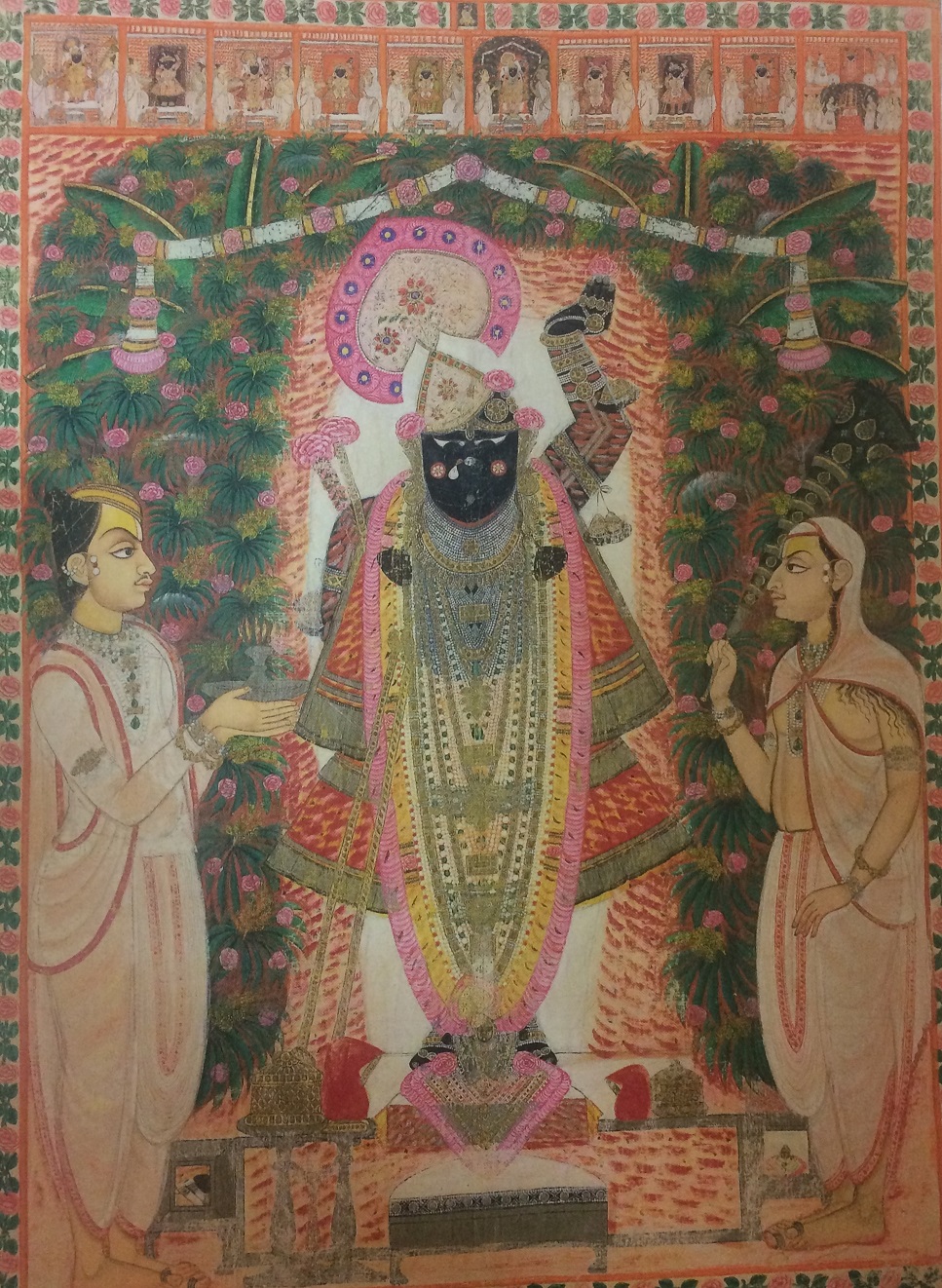

Kunj Ekadashi Festival. Nathdwara, Rajasthan, India. Late 19th century. Pigment on cotton. Arthur M. Sackler Gallery, Smithsonian Institution, 1992.
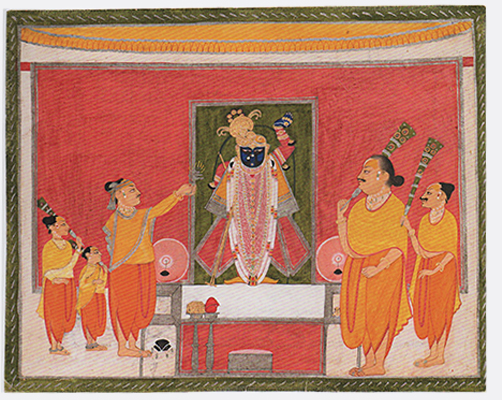

Tilkayat Girdgarji performing Sandhya Aarti on Shreenathji’s birthday. Nathdwara, Rajasthan, India. Mid 19th century.opaque watercolour heightened with gold on paper. Amit Ambalal Collection.
Ref: Gates of the Lord – The Tradition of Krishna Paintings, by by Madhuvanti Ghose,Amit Ambalal,Kalyan Krishna,Tryna Lyons,Anita Shah.
